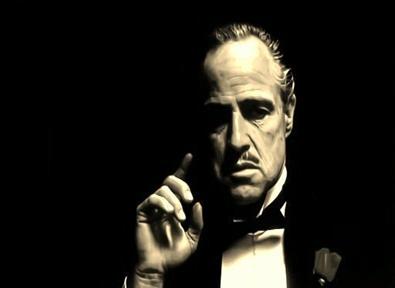Scrum is a framework that when put to good use is capable of increasing a team’s performance between 4 and 10 times. However, some adaptations can work better than others and half-baked ones can cause inherent dysfunctions.
In this series of articles, I’m going to write about the most common dysfunctions of agility we find in the roles of Scrum Master, Product Owner, Development Team and Management. I hope they help you assess whether your Scrum Team has fallen into these traps and how to get out of them.
In this first article, I’m going to write about Scrum Master dysfunctions, but first …
What is the Scrum Master?
This role has been very clearly described in the article by my colleague Lucas Gomes: Scrum Masters: who they are what they do, but here’s a very short summary: the Scrum Master is a servant leader who facilitates the Team and other stakeholders to understand and execute the Scrum process. He is a work facilitator and passionate about the team, which helps him achieve the business’s results.
Unfortunately, some companies ignore the importance of this role and the Scrum Master becomes dysfunctional. The most common issues are…
Losing a great Technician and gaining a lousy Scrum Master
I often say: to become a good Scrum Master, you must take a firm and conscious step towards people.
If you were a really big shot in your technical field (IT, engineering, accounts, logistics, etc.), it doesn’t mean you have or can develop all the skills necessary to become a good Scrum Master. Skills like: systemic vision, negotiation, reading the situation, facilitation, knowing how to acquire and use political capital, neurolinguistic programming, non-violent communication, knowing how to teach, familiarity with the organization’s shortcuts, servant leadership, among others.
Taking someone with vast technical capacity and sending him to fill this position is like shooting yourself in the foot. With one blow you lose a good technician and get a lousy Scrum Master.
The Hero
This is a common problem when you see a technical leader starting to perform the role of Scrum Master. Instead of facilitating the discussion so the team reaches the best decisions, the Scrum Master becomes the hero. He’s the one making all the decisions and everyone accepts what he says. Like a great master, everyone expects him to illuminate the team with his great wisdom in the daily meeting.
Initially, it may seem great for the hero to be recognized as such. However, in the long run, it’s devastating. Calls during vacation breaks and on weekends, getting all the blame for making bad decisions, backed into a corner in unsuitable technical decisions, a dependent team, constant interruptions, having to go to every imaginable meeting possible, among other drawbacks.
If you’re the Scrum Master and are being called on to resolve all sorts of problems, down to the tiniest, don’t rush off madly trying to solve your team’s problem. Think strategically: what can I do to never be called on about this again? Think of a few actions to reduce the team’s dependence on you and put your plan into action. It’s important you move away from the technical part to develop the necessary related skills to become a good Scrum Master.
Absentee
The team is starting to riot and the Scrum Master is in hiding. The Product Owner is piling on orders for the team during the Sprint and the Scrum Master couldn’t give a damn. The manager from the other department is talking to the team directly, but no sign of the Scrum Master. Retrospective, what for? Daily Meetings only when there’s trouble. Where is this guy?
You can’t be absent. You’re the main one responsible for facilitating the Scrum Team’s evolution. If you’re not around to do that, then who is?
Three problems often cause this absence: lack of importance given to this role by the organization; being given the role of Scrum Master while maintaining other duties; and dealing with several teams at once. Let’s take a look at these:
No importance
People don’t give the role its due importance. Someone “wins” the title and now has to figure out on his own how to become a Scrum Master. If he’s not proactive, then nothing’s going to happen.
Think hard about the person who’ll be in this job. Avoid doing Before-After. Examples: Before they were project managers, now they’re Scrum Masters. They are different jobs requiring different skills. We must consider case-by-case if the person has characteristics which might make him a good Scrum Master, the main ones are the will to learn and the desire to take part in the improvement of others.
Accumulation of Roles
You’re in the Development Team and Scrum Master, the Product Owner, and Scrum Master, Manager and Scrum Master. Believe me. I’ve tried, I’ve seen numerous companies trying and the result is always the same. The person ends up giving greater emphasis to one job and abandoning the other.

The Madhatter in Alice in Wonderland. Wearing multiple hats will drive you crazy.
You’re really good. Here’s another team for you
Some people are such good Scrum Masters that companies start thinking they can fulfill this role for 2, 3, 4, 5 teams at once. Like a plate spinner, the more teams, the more time they’ll spend trying to keep each going and less time with each team. And it’s only a question of time before they all collapse.
The Godfather
The next dysfunction deals with the Scrum Master’s leadership within the team. The reason for the Scrum Master’s existence is to be a Servant Leader. If he’s the team’s boss and starts to define by himself how everyone should work, who takes a vacation, what time the team arrives and leaves, who’ll do what task, he ceases to be a facilitator and becomes the team boss, and a bad boss.

The Godfather. A film by Francis Ford Coppola (1972)
This dysfunction commonly occurs when the role of Scrum Master is being carried out at the same time as a managerial job. Is it forbidden to be a Scrum Master and manager at the same time? No, but there are disadvantages. If this is your situation, ask yourself the following: what happens when you don’t go to work? Does the mood become lighter, are people happier working, do they collaborate more with each other?
Samuel asked me this when I had a managerial job before joining Knowledge21: who are you preparing to take on your role? Think about it.
Everyone in their own box
We must resolve problems which go beyond the team’s boundaries and are organizational problems. Examples: lack of authorization, unnecessarily bureaucratic processes, incomplete teams, staff turnover, etc. If there is a problem affecting your team, then you should try to remove it. Clutching onto the crutch of “unfortunately that’s beyond our control” is to live in pain for all eternity.

Everything is fine, even when all around is burning.
There are times when you must have the emotional intelligence to know what moves are needed on the company’s political chess board. Use your skills of gauging the scenario, of negotiation and communication to influence other teams and hierarchical levels in order to change the current situation and put an end to the problem’s root cause.
Use the whole arsenal of metrics, visibility and transparency to bring things from the subconscious to the conscious and provoke changes in the organization. If the immediate management is unable, then go beyond that management level. And if they’re unable to solve it, then go beyond that, and so on…
Sweeping problems under the carpet is a terrible idea and the worst thing for a team is to reach its time or cost limits and only then tell management about its problems. Do an exercise of empathy with your management. Imagine getting the news that the product is incomplete, two days before the launch.
As Scrum Master, we must be disturbed by any pain the Scrum Team endures. It’s not enough to just let management know, you must do your utmost to remove the obstacles.
I’ll influence organizational changes
“Twas ever thus, things never change”.
(Satan, 513 B.C.)
As Scrum Master, we must be disturbed by any pain the Scrum Team endures. It’s not enough to just let management know, you must to your utmost to remove the obstacles.
According to the Scrum Guide, it’s the function of the Scrum Master to:
-
- help employees and interested parties understand and apply Scrum and the development of an empirical product;
- cause (organization) changes which increase the Scrum Team’s productivity;
- work with other Scrum Masters to increase the efficacy of Scrum application in the organization.
The Scrum Master’s journey
The Scrum Master’s journey can contain several stages: Executor, Mentor, and Coach.
Let’s start with executors, who make things happen. Immature teams often need a more executive role than a facilitator. With time, we must do less executing and more mentoring. We still won’t be facilitators, but little by little we’ll be moving back from technical activities and binding ourselves to people. Finally, we come to the level of coaching. In this stage, we facilitate people to reach better decisions, without actively taking part in the discussions.
In practice, these stages aren’t well defined. There are times when a Scrum Master who is already able to be a coach, will have to take part in some stage of execution or carry out some sort of mentoring. Exceptions do occur, but they should always be exceptions.
While I was on my journey, I read and really enjoyed the book Coaching Agile Teams: A Companion for ScrumMasters, Agile Coaches, and Project Managers in Transition. It helped a lot during my transition from software developer – Scrum Master – Manager and Coach. I also really like the Coaching the Coach sessions we do at KNOWLEDGE21 and recommend you use similar tools. This is basically a discussion between coaches who share their experiences and think about how to resolve any challenges.
Invitations
I’d like to take this opportunity to invite you to take part in our Certified Scrum Master (CSM) training, learn about the Scrum method and get an international certification as a Scrum Master.
Also, do read the other posts in our blog relating to this role. And coming soon, we’ll be publishing the dysfunctions of the role of Product Owner.
